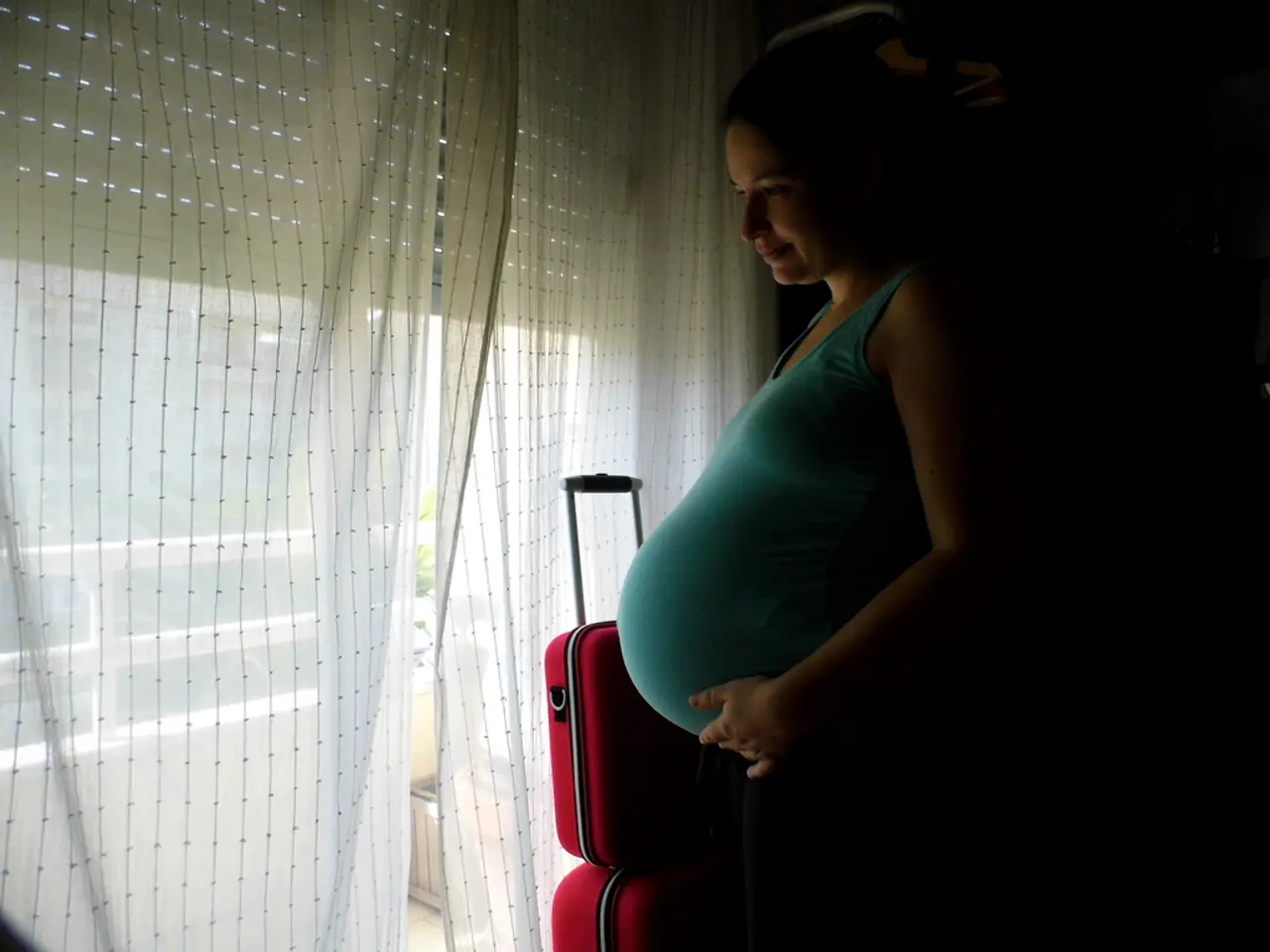Pregnancy and Pulmonary Embolism: Key Facts to Understand
Pregnancy Increases Risk of Pulmonary Embolism
Pregnancy can significantly increase the risk of a Pulmonary Embolism (PE), particularly during the third trimester and the postpartum period. This is primarily due to physiological changes during pregnancy that promote blood clot formation [1][3].
Common Causes and Symptoms
Common causes of PE during pregnancy include Deep Vein Thrombosis (DVT), especially in the lower extremities, cesarean delivery, a previous history of DVT or clotting disorders, obesity, multiple pregnancies, genetic clotting disorders, and certain medical conditions such as inflammatory bowel syndrome [3].
Symptoms of PE during pregnancy can overlap with common pregnancy symptoms but may include sudden onset shortness of breath or difficulty breathing, sharp or pleuritic chest pain, cough (which may sometimes produce blood), and swelling or pain in one leg, typically the sign of an underlying DVT [3][4].
Diagnosis and Treatment
Diagnosis in pregnancy avoids some usual tools and relies on clinical suspicion and imaging studies. Chest X-ray is often the initial imaging, with a ventilation/perfusion (V/Q) scan preferred if the chest X-ray is normal. If the chest X-ray is abnormal, a CT pulmonary angiography (CTPA) can be performed carefully [1].
Treatment during pregnancy typically follows similar principles as in nonpregnant patients, with emphasis on safety for mother and fetus. Anticoagulation therapy (blood thinners) is the mainstay to prevent clot growth and new clots. Reperfusion therapy (such as thrombolysis) may be used if there is life-threatening hemodynamic instability [1].
Prevention Strategies
Preventive measures include identifying high-risk women, use of anticoagulation prophylaxis when indicated, encouraging mobility during and after pregnancy, and use of compression stockings if recommended [1][5].
Anyone at increased risk of blood clots should see a doctor for regular health checks and potential anticoagulant medications to help prevent blood clots and PE. Those taking medications to help prevent or manage PE during pregnancy will require routine monitoring and may require adjustments to their medication dosages [2].
A PE is a blockage within an artery in the lungs caused by blood clots, most of which originate in the deep veins of the arms, legs, or pelvis and are referred to as DVTs. A PE occurs when a blood clot or a fragment of a blood clot breaks away and travels to the lung, blocking the pulmonary artery [4].
The risk of a PE increases during pregnancy and in the first following childbirth due to normal changes in hormone levels and the way in which blood flows through the veins [1]. Early recognition and preventive measures are critical during pregnancy and postpartum periods.
- Despite the contextual risk increase during pregnancy, science has developed anticoagulation therapies like Paxlovid to help manage blood clots and prevent Pulmonary Embolisms (PE), but their use in pregnancy needs to be carefully blocked and monitored due to potential effects on the health and wellness of both mother and child.
- Women's health specialists should consider retargeting their medical-conditions screening during pregnancy to include conditions that may increase the risk of blood clots, such as inflammatory bowel syndrome or cardiovascular health issues, to ensure optimal health and wellness for pregnant individuals.
- Pregnant women with prior Deep Vein Thrombosis (DVT) or clotting disorders, or those experiencing multiple pregnancies, may require pfizer's anticoagulation medications to prevent PE and blocked blood vessels, especially during the third trimester and postpartum period.
- Given the higher risk of PE during pregnancy, it's essential to implement prevention strategies, including careful screening for women at high risk, prophylactic treatments, encouraging mobility, and using compression stockings where necessary, ensuring a healthier pregnancy for all.
- Educating women about the warning signs of PE during pregnancy, such as sudden onset shortness of breath, chest pain, and leg swelling or pain, is crucial in the early detection and treatment of potential blood clots, reducing the risk of blocked arteries and PE-related complications.




